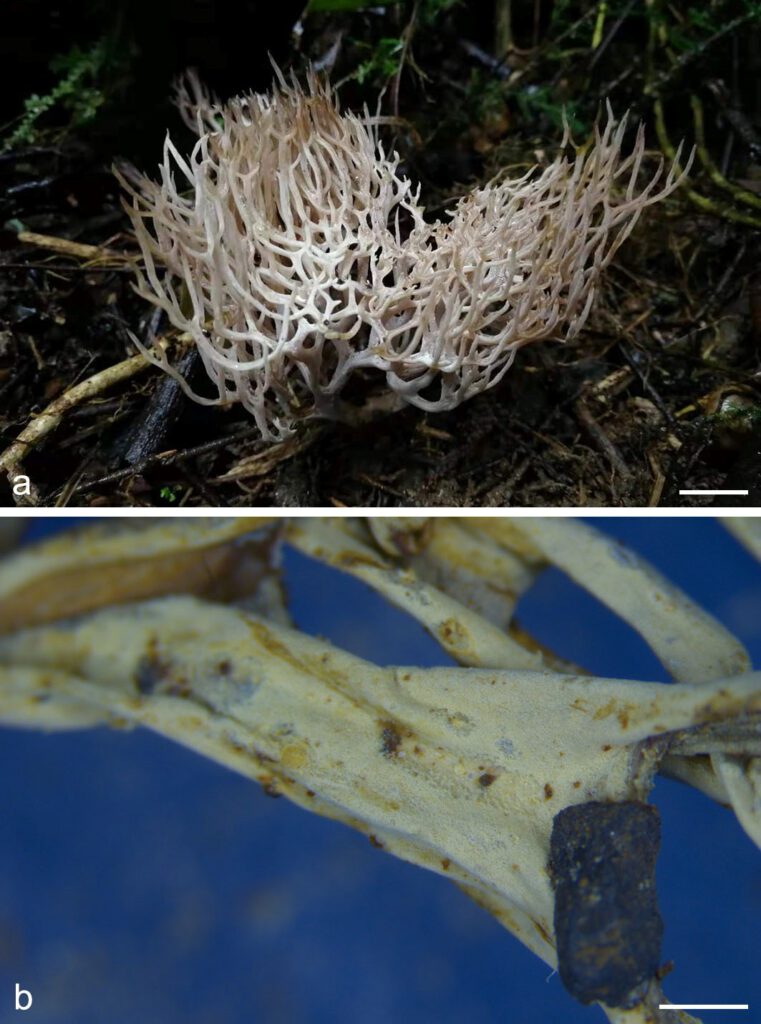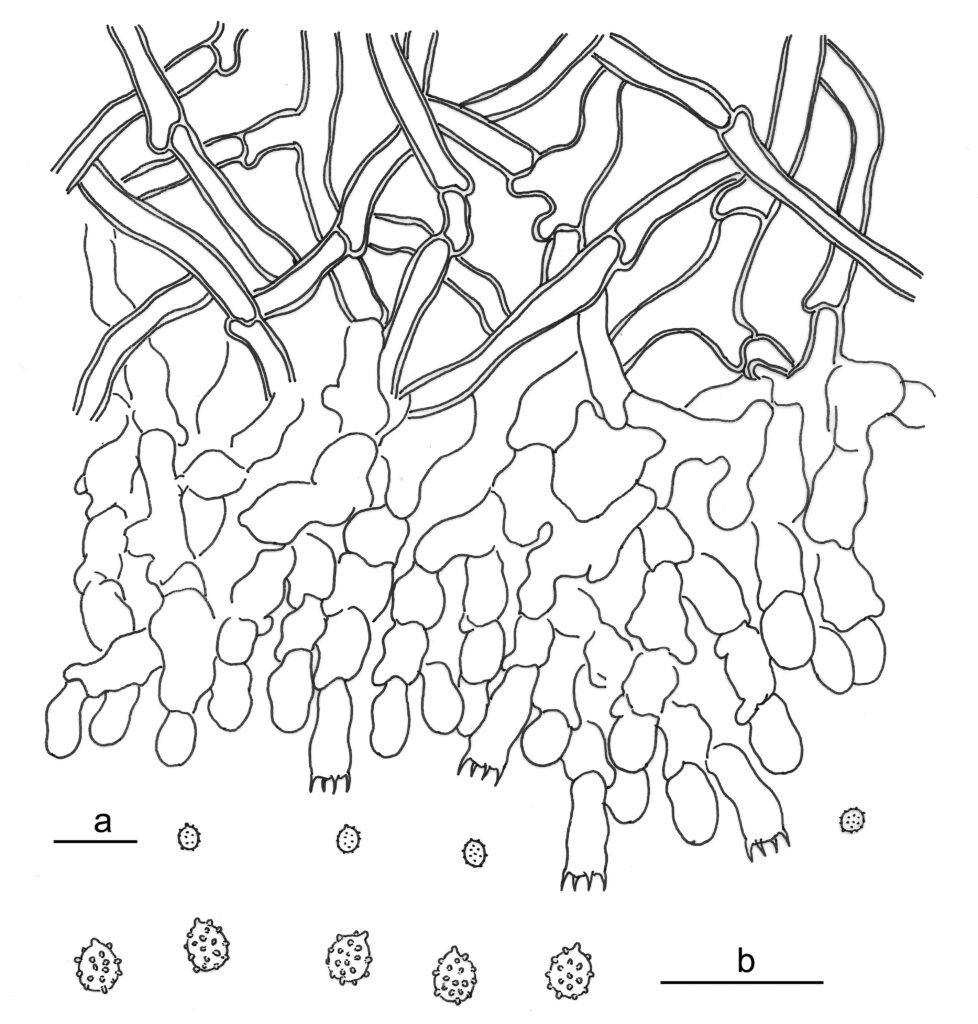Trechispora longiramosa S.L. Liu, S.H. He & L.W. Zhou
MycoBank number: MB 559894; Index Fungorum number: IF 559894; Facesoffungi number: FoF 12874;
Description
Basidiomes annual, clavarioid, solitary or in small groups, densely branched, moderately open, fleshy consistency, cream to buff turning yellowish brown towards the apex when fresh, olivaceous buff turning dark brown towards the apex when dry, with fishy odor, 7 cm high. Branches polychotomous, axils U-shaped, tips acute, white to honey-yellow. Stipe white to cream, 5–15 × 1–2 mm. Hyphal system monomitic; generative hyphae with clamp connections. Subicular hyphae hyaline, thin-walled, cylindrical, moderately branched and septate, subparallel, 3–8 μm in diam; ampullate septa usually present in the hyphae at the base of the stipe, up to 8 μm wide. Subhymenial hyphae short-celled and wide, 4–8 µm in diam, much branched. Basidia suburniform to subclavate, hyaline, thin-walled, with four sterigmata and a basal clamp connection, agglutinated, 15–23 × 8–11 µm; basidioles in shape similar to basidia, but slightly smaller. Basidiospores ellipsoid, hyaline, thin-walled, aculeate with spines slightly swelled in 5% potassium hydroxide, inamyloid, indextrinoid, acyanophilous, (4–)4.8–6 × (3–)3.3–4(–4.5) µm, L = 5.2 µm, W = 3.8 µm, Q = 1.4 (n = 60/2).
Material examined: CHINA, Guizhou, Libo County, Maolan National Nature Reserve, on ground, 17 July 2019, G. He, CH 19233 (holotype in HMAS).
Distribution: CHINA
Notes: Micromorphologically, T. longiramosa is similar to T. copiosa by similar shape and size of basidiospores; however, T. copiosa differs in V-shaped branches and pale greyish yellow to beige basidiomes (de Meiras-Ottoni et al. 2021).

Fig. 1. Basidiomes of Trechispora longiramosa (CH 19233, holotype). a. Fresh specimens; b. Hymenophore on branches of dried specimens. — Scale bars: a = 1 cm; b = 1 mm.

Fig. 2. Microscopic structures of Trechispora longiramosa (drawn from the holotype). a. Hyphae in subiculum; b. Vertical section of basidiomes; c. Basidia; d. Basidiospores. — Scale bar = 10 μm.
